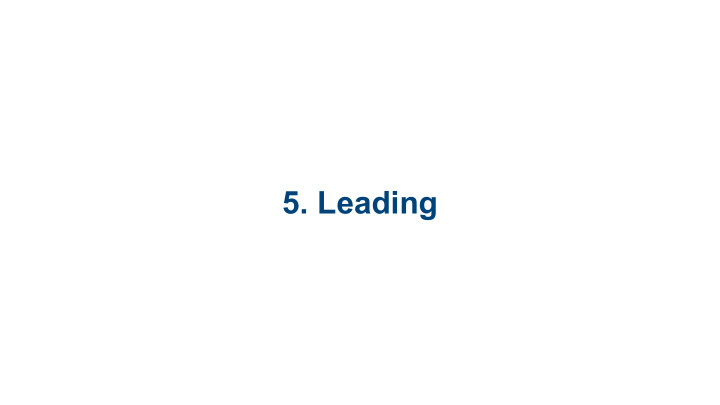



Self-Efficacy - Believes one can be successful in a specific task. Tends to improve performance in those tasks. The only personality trait that is job-specific
Leaders With the Right personality are … Anyone who has confidence and interpersonal skills can be a trait-driven leader …
Personality traits suggest who will be an effective leader, but behaviors are the final answer
5.6 Power in Organizations
We have looked at leadership and management. Now we want to look at power itself
What Do We Mean When We Say Power?
Power is how we assert our will and convince others to do our bidding
Sources of Organizational Power Coercive - The power to punish non-compliance. Reward - The power to reward - the opposite of coercive power. Referent - This is the power that comes from having people like me and want to please me.
Expert - I have more knowledge in a certain area than do others. Information - I know a secret that affects an outcome so others can’t safely disobey me. Connection - I have a connection with someone in real power and can exercises their power on my behalf.
Sources of Power Coercive - This represents the consequences transactional leaders warn us about if we don’t follow the rules
Reward- This represents the rewards transactional leaders promise us if we follow the rules Referent - I am popular with other people who have power. This is where the personality trait of agreeableness comes into play
Expert - Because I have been right before and everyone has confidence in my decisions in this area, no one wants to question my advice
Information- I have access to specific information that others do not. Similar to Expert power but VERY situational Connection - Very political in nature. I have powerful friends so I am powerful
Powerful People are … Those with unique knowledge, skills, connections, information, or the ability to control outcomes
We all have some degree of power. Inside organizations, it can be important to develop and manage power
5.7 Leadership in Teams
Leading and managing is hard with individuals. Do it in a group setting and it becomes much harder still
The group is formed Forming The fight for dominance Storming Learn to cooperate Norming Performing get some work done Adjourning The end
Punctured Equilibrium Forming Storming Norming Performing Non-linear and goes back and forth Adjourning
The leadership needed can be different in each stage of team development
Authoritarian as the group comes together Forming Participative as roles are defined Storming Coaching as confidence grows Norming More coaching/ Performing democratic style Adjourning
Cohesion Similarity • Stability • Size • Support • Satisfaction •
Cohesion is “social glue”, helping teams stick together and cooperate
Too Much Cohesion? If the group sticks too closely together, they can have a problem called “Groupthink”
Social Loafing Does it really matter how hard I pull? I won’t be recognized as an individual if we win or lose
How we form a team is important, but there are several types we can form
Types of Teams Cross-Functional - Team members from many different functions/backgrounds Functional - Team members all from the same function/ background
Self-Managed - Teams that are empowered, with responsibility and authority to lead themselves
Leading any team requires us to understand the structure of the team, the task it faces, and how long it has been in place
Recommend
More recommend